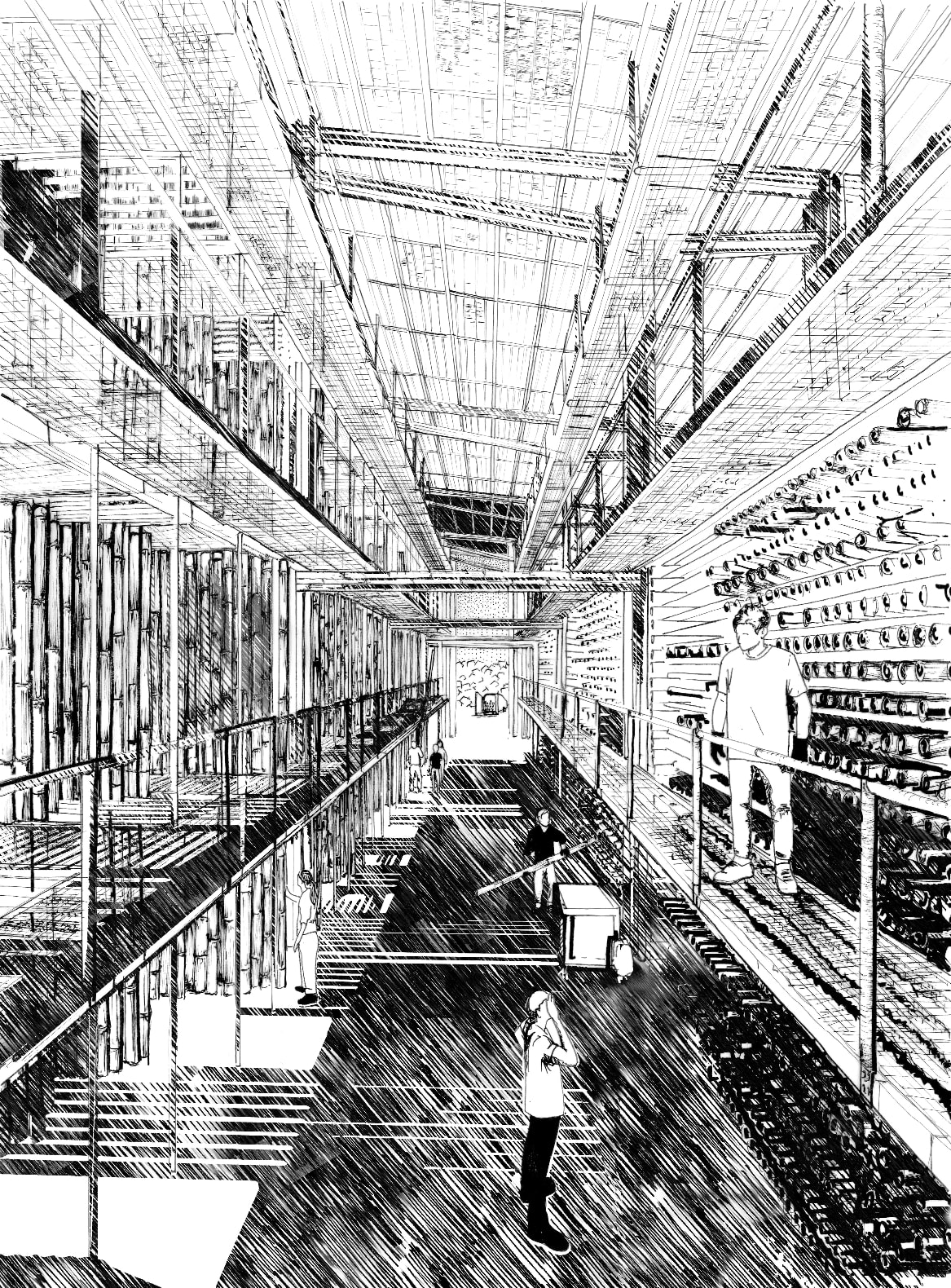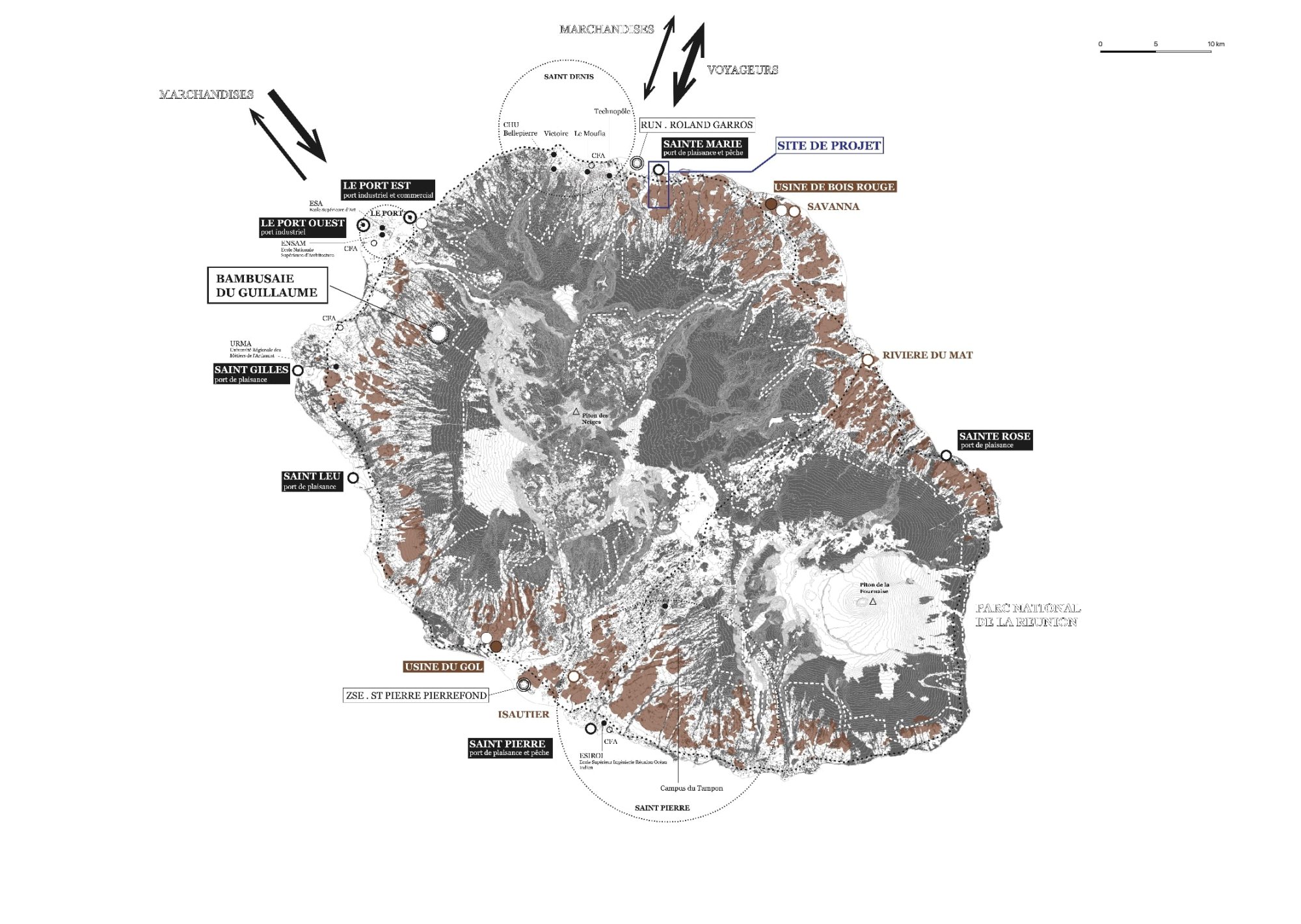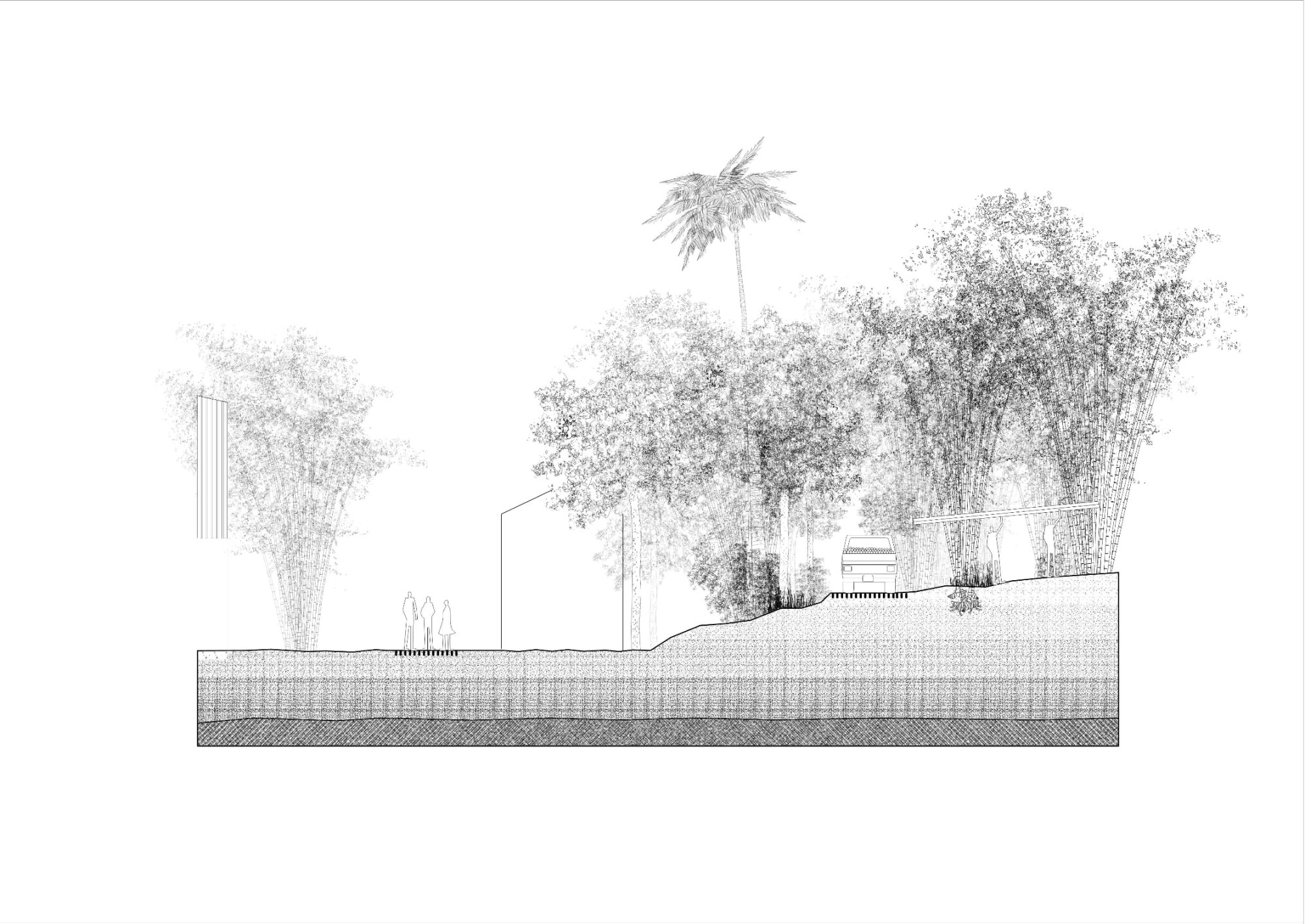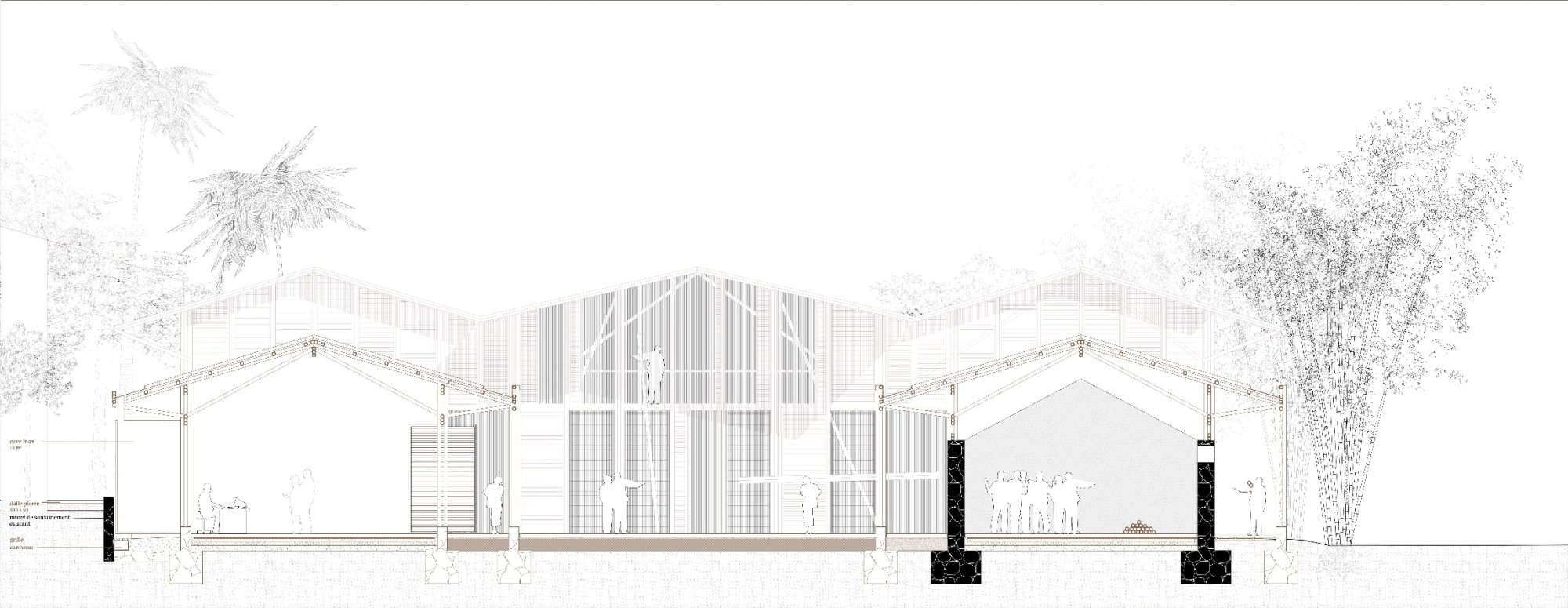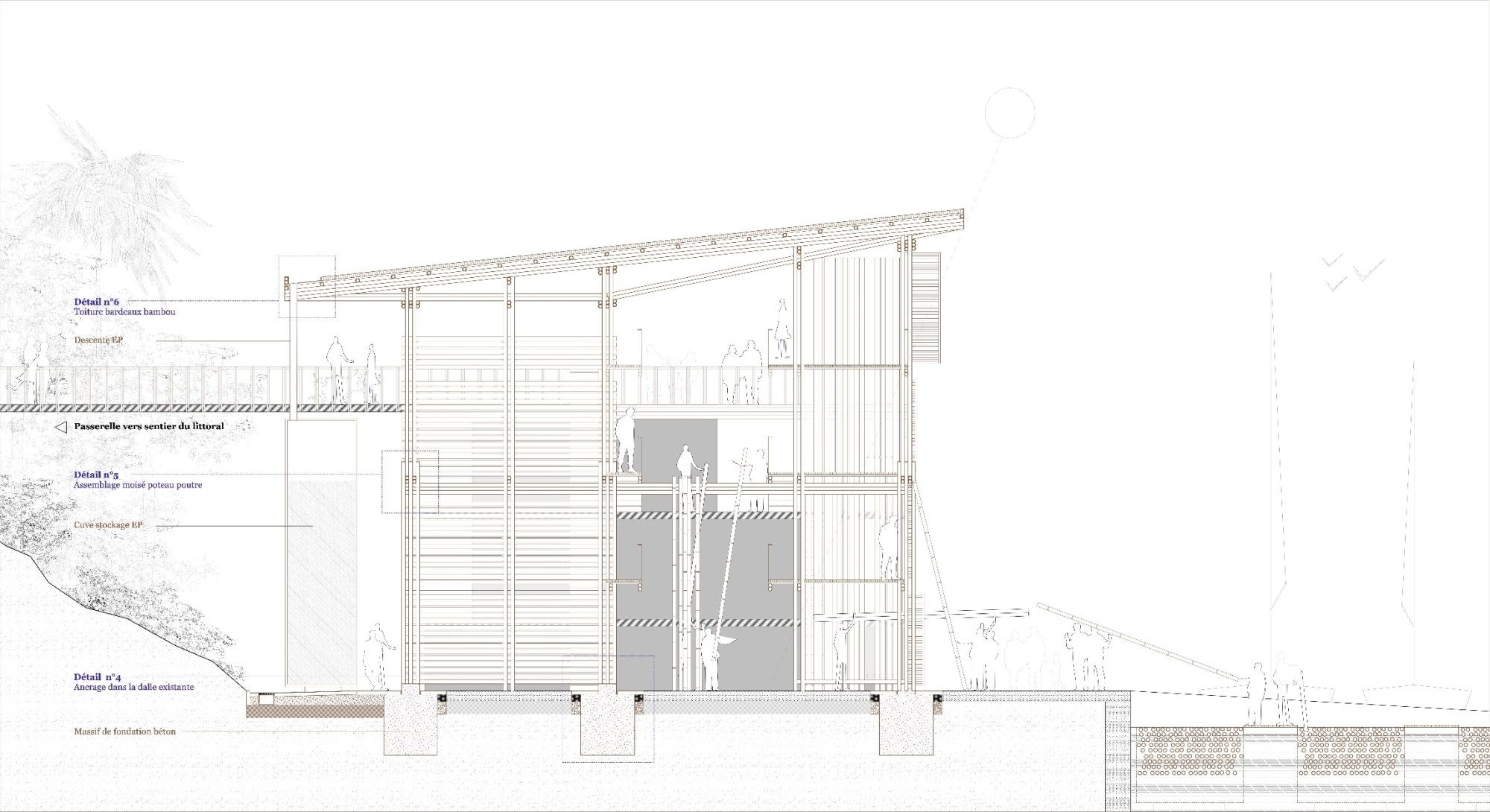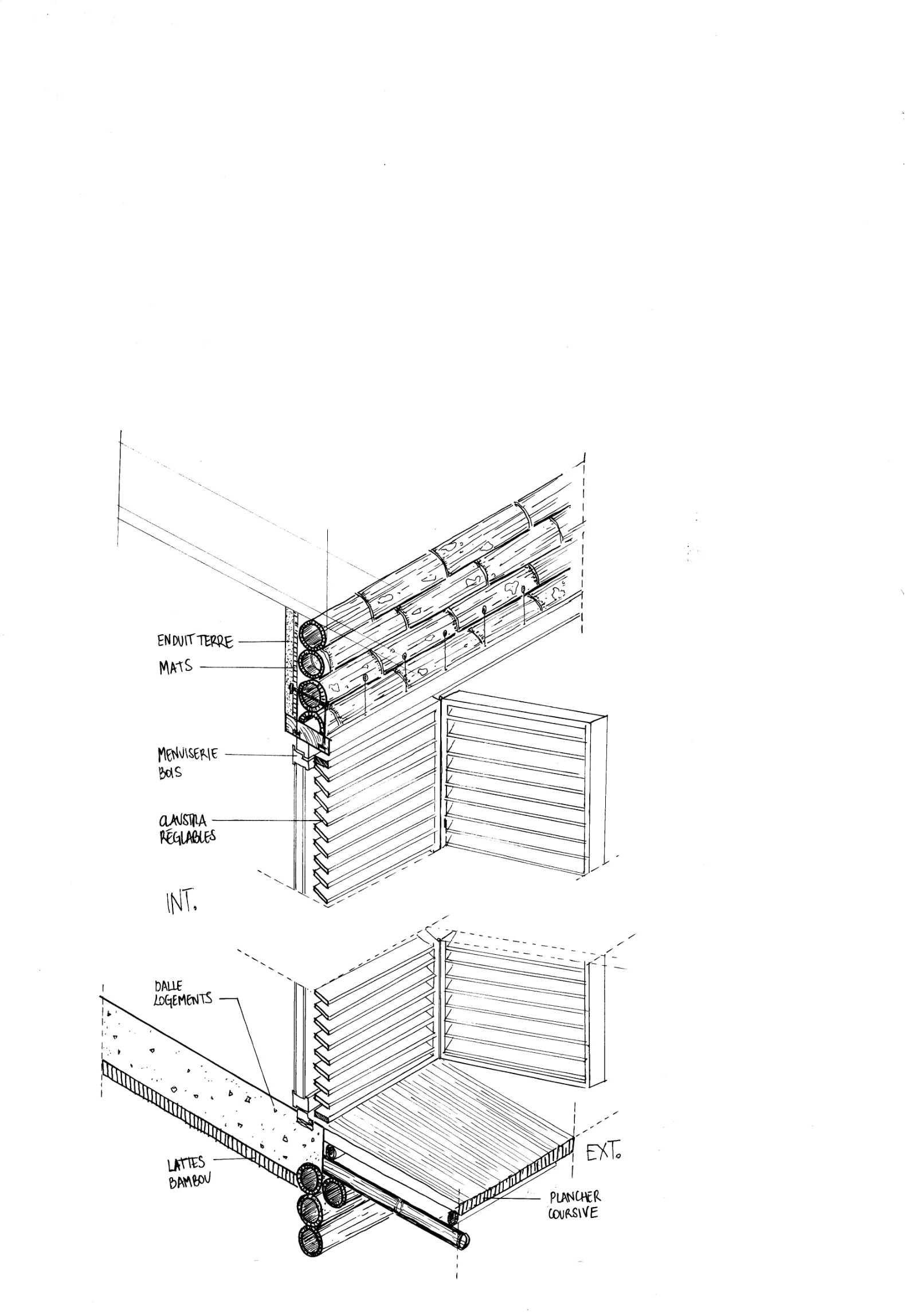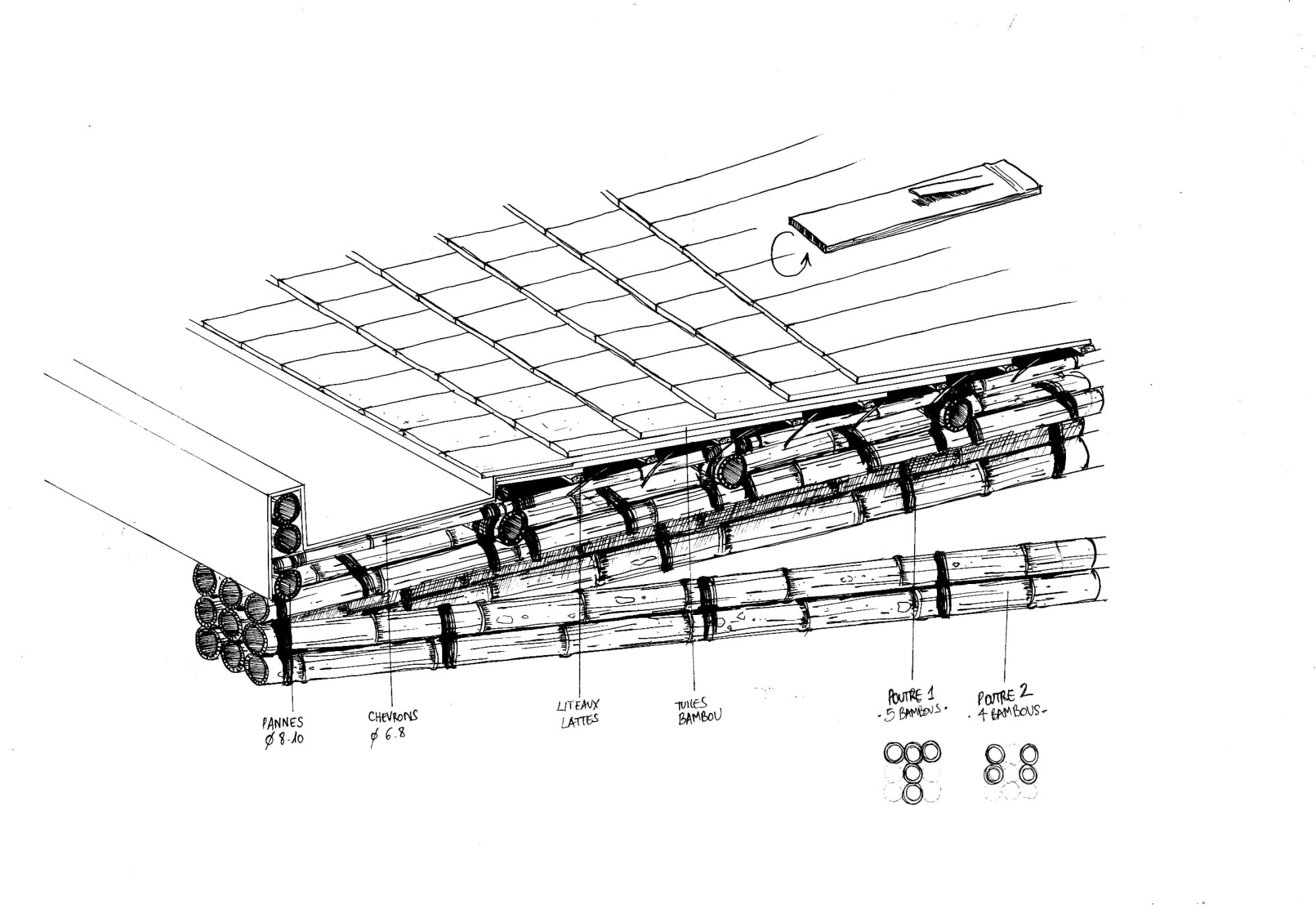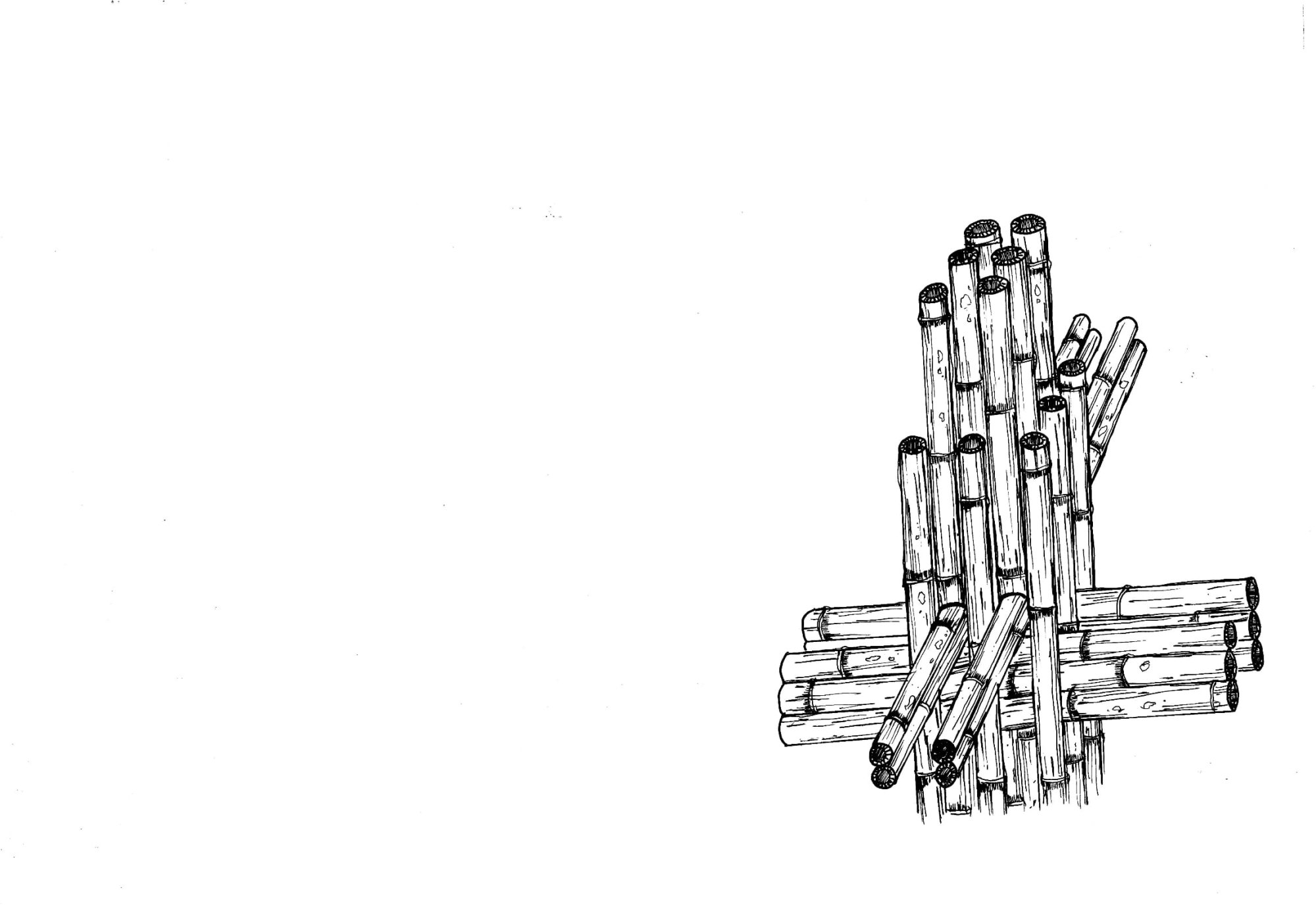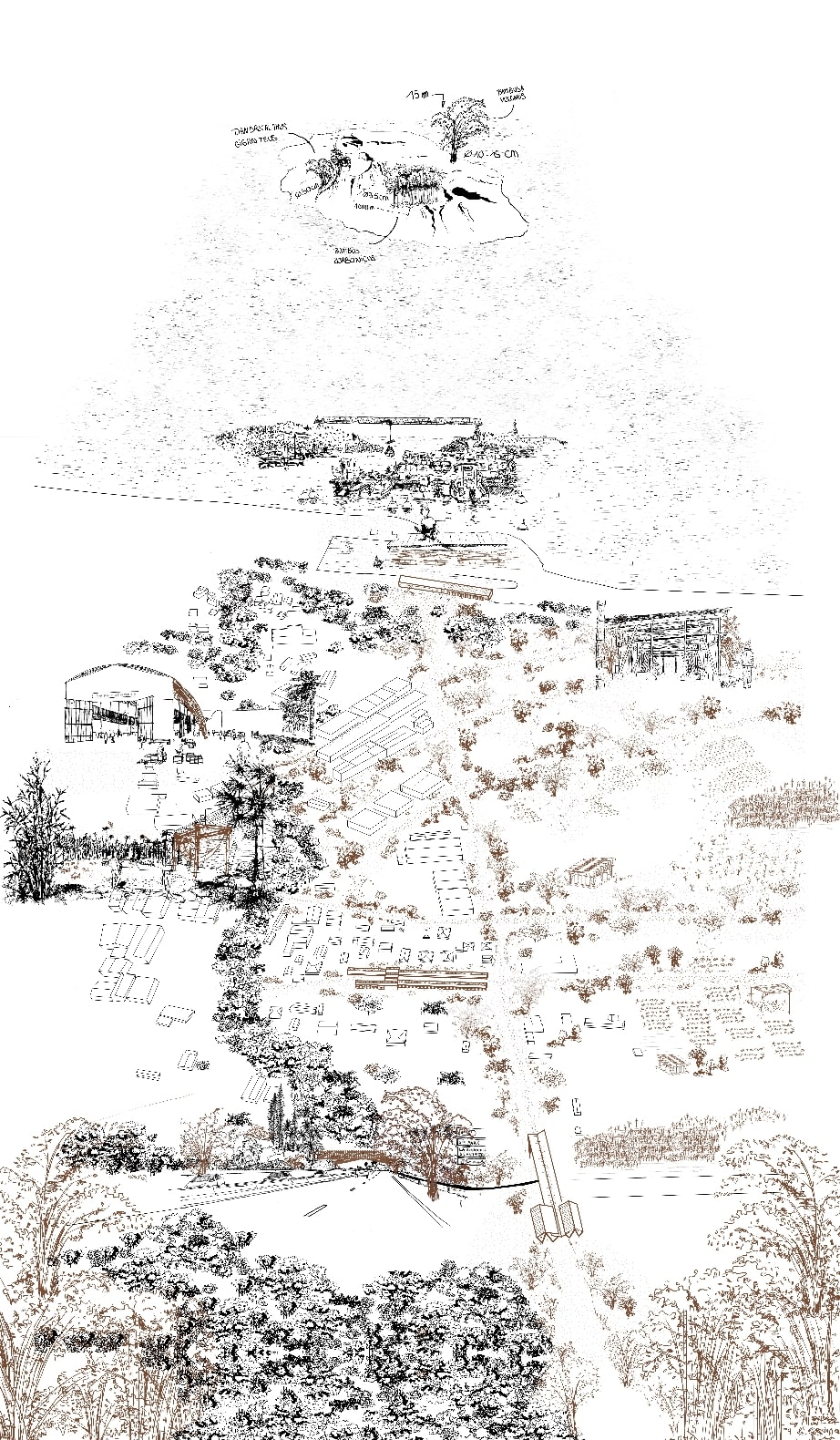Adele GUERRI--GRAMMONT
Filière en chantier
Ce projet propose de questionner le modèle d’urbanisation et les systèmes d’approvisionnement d’un territoire insulaire tropical. Il s’intéresse à l’’île de la Réunion, un département d’outre mer français, dont le modèle économique s’est développé de manière quasi exclusive autour de la filière canne à sucre. Ce produit du territoire est principalement dédié à l’exportation au détriment de l’autonomie de l’île en ressources alimentaires et constructives qui dépendent pour beaucoup des dynamiques d’importation. L’actuelle décroissance progressive de la production sucrière, due au mitage des terres agricoles par l’extension des zones urbaines et à la diminution des subventions publiques, invite à envisager une mutation progressive du modèle agricole et questionne le modèle d’approvisionnement global.
Pour répondre au double enjeu de transition agricole et de production de ressource constructive locale, ce sujet s’intéresse au développement de la filière bambou. Le bambou est une plante au cycle de régénération extrêmement rapide, présentant de multiples potentiels environnementaux, en faisant une ressource renouvelable quasiment inépuisable. Mais la filière est encore peu structurée à l’échelle du territoire réunionnais. L’absurdité logistique du modèle de consommation actuel consiste donc à importer d’ailleurs une ressource naturellement présente sur le territoire tandis que l’on cultive consciencieusement un produit dédié à l’export. Les enjeux actuels pour stimuler le développement de la filière sont de planter du bambou sur des zones accessibles pour de la production, de transformer cette matière produite via des unités de traitement locales à proximité des sites de plantation, de former les producteurs, transformateurs et constructeurs pour consolider les différents maillons de la filière.
Pour tenter de proposer une forme de modèle de développement répondant à ces enjeux, ce projet s’intéresse à un site périurbain sur la commune de Sainte-Marie : la frange Est de la Z.A. La Mare. Située sur la côte au vent fertile, au nord est, Sainte Marie a longtemps été le « grenier » de l’île, dont le paysage porte donc les marques du passé agricole sucrier mais aussi celles de l’urbanisation récente désordonnée symptomatique des zones périurbaines. Ce site présente un
Résumé
certain nombre d’atouts permettant d’imaginer une stratégie pour la filière.
Au delà d’une ressource constructive locale, la filière bambou pourrait être un outil pour développer une urbanité insulaire plus résiliente, initiant des mutations territoriales, entremêlant les domaines d’activité, s’intégrant à la topographie urbaine existante et absorbant les transformations des activités anthropiques.
A l’échelle urbaine, le projet est d’abord paysager. Une stratégie centrée sur l’enrichissement d’un axe Nord Sud partiellement existant, qu’il s’agit de prolonger et d’épaissir, vise à transformer la limite entre zones urbaine et agricole en une lisière agro-urbaine habitable et productive. Cet axe devra s’accompagner d’un maillage circulatoire d’abord piéton puis agricole afin de récréer une forme de porosité à travers cette frange aujourd’hui infranchissable. Il s’agit de requalifier les interstices entre les parcelles puis de régénérer celles qui sont polluées pour les rendre de nouveau habitables.
Le long de cet axe, trois sites de projet émergent, semblant propices à accueillir, dans un premier temps, des pôles programmatiques vecteurs du développement de la filière et de la transformation de cette frange. Chaque site s’implante sur un espace aujourd’hui délaissé, sans perturber les activités actuelles de la zone artisanale, et participe à renforcer un maillon de la filière bambou. Le centre de formation, la fabrique portuaire et la passerelle de franchissement de la quatre voies sont des occasions pour démontrer la pertinence du matériau bambou à répondre aux problématiques constructives tropicales et aux contraintes imposées par la saisonnalité du territoire. Le traitement et la mise en œuvre du bambou se calquent sur le cycle de régénération de la plante, impulsant un rythme saisonnier au paysage agricole et constructif. En hiver à la saison de coupe, les bosquets sont animés, les stocks se remplissent d’un matériau vert qui s’éclaircira en séchant au cours de l’été. Le cycle de cette matière en transformation participe à l’architecture de la filière.




